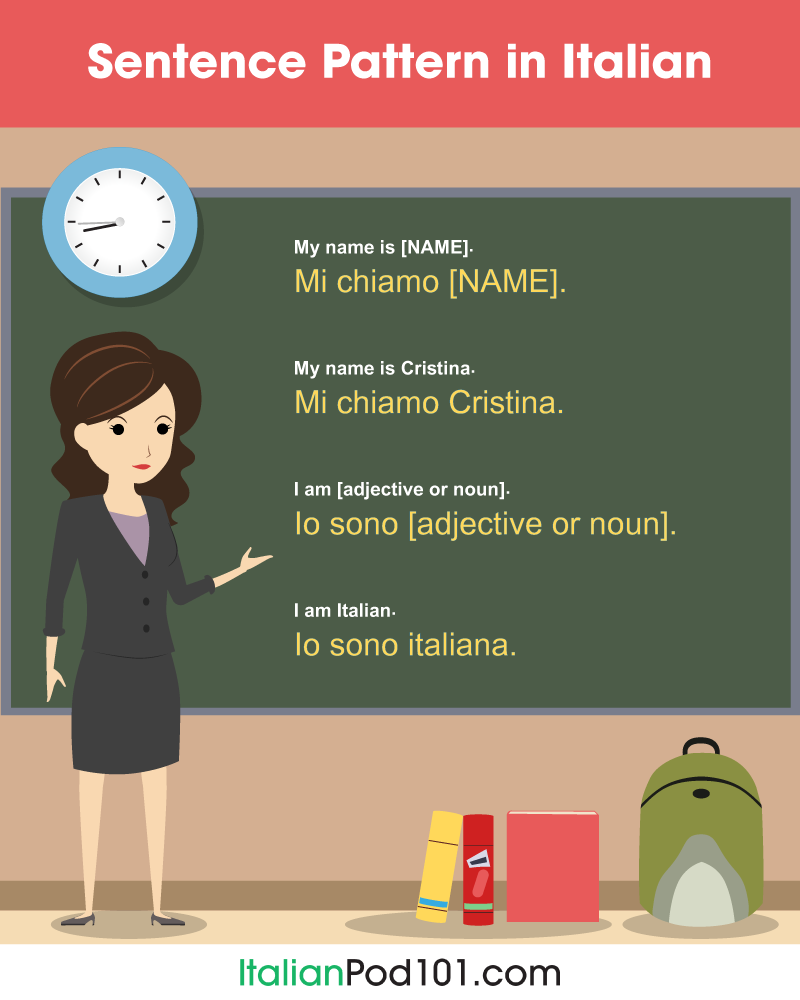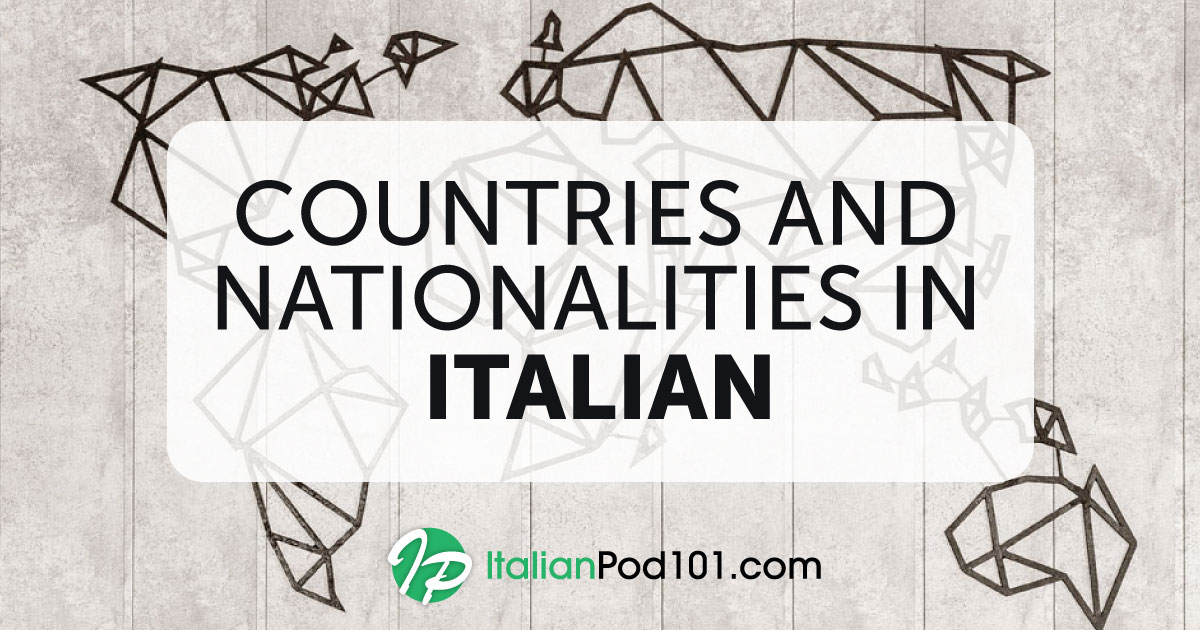Without conjunctions, we would be talking like robots, putting together a sequence of detached sentences. You might not realize this, but conjunctions are a very important part of our language. They have the important job of coordinating and linking phrases.
So, let’s discover and practice the most commonly used conjunctions in Italian (including coordinating conjunctions in Italian), because these little bricks in your sentences will help you connect your Italian phrases and make your Italian conversation flow. And this is exactly what you’ll need to speak Italian like a pro! (See how I used conjunctions to link the last three sentences?) 🙂
As you can see, even the most simple Italian conjunctions can make a huge difference.
But before learning Italian conjunctions, let’s take a more detailed look at what a conjunction is.
Table of Contents
- What is a Conjunction?
- Italian Conjunctions to Correlate Similar Thoughts
- Italian Conjunctions to Express Condition
- Italian Conjunctions to Express Cause
- Italian Conjunctions to Express Opposition
- Italian Conjunctions to Express Purpose
- Italian Conjunctions to Express Time
- Italian Conjunctions to Explain
- Italian Conjunctions to Express a Conclusion
- ItalianPod101: Your Guide to Italian Grammar & Culture
1. What is a Conjunction?
Conjunctions serve as connectors to link together two or more sentences or groups of words. They are invariable, meaning that they don’t change—and this is good, because you won’t have to worry about the agreement of feminine, masculine, singular, or plural.
There are two types of Italian conjunctions:
- Italian coordinating conjunctions, which put together two or more elements of the same importance
- Italian subordinating conjunctions, which put together two or more elements establishing a dependence
For example, take Vado in pizzeria e poi al cinema (meaning “I go to a pizzeria and then to the movies,” when translated). In this sentence, e poi (and then) are two coordinating conjunctions.
But if I say, Vado in pizzeria perché ho fame (or “I go to the pizzeria because I am hungry,” when translated), this is a subordinative conjunction, because going to the pizzeria depends on the fact that I am hungry (in this case, it’s the cause).
Now, are you ready to learn Italian conjunctions? We thought so! Without further ado, here’s our Italian conjunctions list!
2. Italian Conjunctions to Correlate Similar Thoughts
Let’s start with some basic Italian conjunctions: those that correlate similar thoughts.
E: This is the very first conjunction you’ll learn when you start studying Italian. E means “and,” and it’s impossible to do without because you use it to link two or more words in a sentence:
“I eat bread and cheese.” (Mangio pane e formaggio.)
It can also link two sentences/verbs:
“I went to the movies and I saw a nice Italian film.” (Sono andato al cinema e ho visto un bel film italiano.)

Pane e formaggio. (“Bread and cheese.”): it also means two people that really get along!
Whenever you write in Italian, pay attention to the difference between e to connect parts of your phrases and the third person verb è (it is) that needs the accent. This is a very common mistake that many young Italian students make, and nonetheless it’s a red pen mistake! To help you remember, here’s a little filastrocca (nursery rhyme):
E senza accento lega,
È con accento spiega.
“E with no accent binds,
È with an accent explains.”
Take a look at this Italian conjunctions chart to see how other common and useful correlative Italian conjunctions work:
| Italian Conjunction | English Equivalent | ||
|---|---|---|---|
| anche | also | Vado al cinema e viene anche Marco. | “I go to the movies, and Marco will also go.” |
| inoltre | besides | Oggi non esco, inoltre piove. | “I won’t go out today, besides it rains.” |
| né | nor | Non so ballare né cantare. | “I can neither dance nor sing.” |
| o/oppure (synonyms) | or | Vuoi la torta o/oppure il gelato? | “Do you want ice cream or cake?” |
| nemmeno neanche neppure (synonyms) |
not even | Non esco nemmeno/neppure/neanche per un minuto. | “I won’t go out, not even for a minute.” |
| nemmeno neanche neppure (synonyms) |
neither | Non esci? Nemmeno/neanche/neppure io! | “You don’t want to go out? Neither do I!” |
3. Italian Conjunctions to Express Condition
Se non piove, vado al mare. (If it doesn’t rain, I’ll go to the beach.)
This is a very common sentence structure that you’ll often need when you want to talk about a hypothetical situation. To do so, you’ll need to use another one of the most common Italian conjunctions, se (if), which is used to introduce a hypothetical sentence.
What does “hypothetical” mean? Simply that you’re stating a doubt, or a possibility (either realistic or impossible) that could occur. The difference between being realistic or not is actually very important in Italian, since what tenses you’ll use in your sentence depend on this.

Ipoteticamente, se fossi italiana userei sempre il congiuntivo! (Hypothetically, if I were Italian I would use the subjunctive all the time!)
Look at the example in the table to see the difference. Do you want to know more about Italian verbs and tenses?
| Italian Hypothetical Phrase | English Equivalent | Situation | What tenses? |
|---|---|---|---|
| Se non piove, vado al mare. | “If it doesn’t rain, I’ll go to the beach.” | Very realistic possibility | Present – Present |
| Se fossi un pesce vivrei nel mare. | “If I were a fish, I would live in the sea.” | Highly improbable | Past Subjunctive – Conditional |
4. Italian Conjunctions to Express Cause
Oggi vado al mare perché c’è il sole (Today I go to the beach since it is sunny.)
Perché (since; because) is one of the most useful Italian conjunctions to know and use, because it explains the reason or the cause behind some action.
Other conjunctions to express cause are poiché, siccome, and visto che. They are synonyms of perché and also mean “since.” Notice how, unlike perché, they can be at the beginning of a sentence.
- Poiché non mi chiami, vado da sola. (Since you didn’t call me, I’ll go by myself.)
- Siccome piove, non vado al mare. (Since it’s raining, I won’t go to the beach.)
- Visto che sei italiano, devi sapere fare la pizza! (Since you’re Italian, you must know how to make pizza!)
Sono Italiano ma non so fare la pizza! La mangio solamente… (I’m Italian, but I can’t make pizza. I only eat it… )
Another difference is that perché is also used to ask a question: Perché non vai al mare? (Why don’t you go to the beach?).
So you see that while in English there are two separate words for it (why and because), depending on whether it’s a question or an answer/explanation, in Italian, they’re the same word: perché. And don’t forget to put the acute accent on the é at the end of perché!
Perché? Perché sì! (Why? Just because!)
5. Italian Conjunctions to Express Opposition
These conjunctions in Italian are the perfect tool when you want to make an excuse for some action. So obviously, they’re very useful to help you politely decline an invitation, an opinion you don’t agree with, or a second helping of lasagna from your friend’s grandma…
The most common conjunctions to express opposition are ma or però (both mean “but” when translated):
- Mi piacerebbe andare al mare, ma oggi devo studiare. (I would love to go to the beach, but today I have to study.)
- Capisco il tuo punto di vista, però non sono d’accordo. (I understand your point of view, but I don’t agree.)
- La lasagna è buonissima, ma sono proprio sazio! (The lasagna is fantastic, but I am really full!)
6. Italian Conjunctions to Express Purpose
Affinché, così, and perché all mean “so that.”
Whenever you want to express the purpose of an action that you stated in the main sentence, use conjunctions such as per, affinché, cosí, or perché, which all mean “so that.” For most of these, you need to pay extra attention because they require the use of the congiuntivo (the subjunctive tense).
- Ti chiamo perché tu capisca la situazione. (I’m calling you so that you understand the situation.)
- Scrivo l’esercizio affinché tu possa correggerlo. (I’ll write down the exercise so that you can correct it.)
- Lo spiego di nuovo cosí che voi comprendiate. (I’ll explain it again so that you’ll all understand.)
When the two sentences (main and subordinate) have the same subject, you can use the simpler conjunction per without the subjunctive. I bet you loved that…!
Ti chiamo (io) per spiegarti (io) la situazione. (I call you to explain the situation.)
If you want to know more about this type of sentence, check out this lesson on our website.
7. Italian Conjunctions to Express Time
Quando? and Per quanto tempo? mean “When?” and “For how long?” respectively. Whenever you need to answer those questions, you’ll be using conjunctions to express time.
Guardo la clessidra mentre il tempo passa (I watch the hourglass, while time goes by).
The most common of Italian conjunction words for this is definitely quando (when). And you must have heard the old and very famous Italian song ‘60 Quando, Quando, Quando by Tony Renis. Can you sing along?
- Mentre (While)
Non parlare mentre mangi. (Don’t talk while you eat.) - Quando (When)
Esco sempre quando nevica. (I always go out when it’s snowing.) - Appena/Non appena (As soon as)
Ti chiamo (non) appena ho finito. (I’ll call you as soon as I’m done.)
Notice how appena/non appena have exactly the same meaning. - Prima di/che (Before)
Bevo un bicchiere d’acqua prima di dormire. (I drink a glass of water before I go to sleep.)
Ti voglio parlare prima che tu esca. (I want to talk to you before you leave.) - Dopo di/che (After)
Esco solo dopo avere finito i compiti. (I only go out after I finish my homework.)
Esco solo dopo che hai finito i compiti. (I only go out after you finish your homework.)
8. Italian Conjunctions to Explain
How many times have you said something in Italian and then realized your idea wasn’t clear enough? In that case, these conjunctions to explain will come in quite handy! The most common in Italian are cioè (that is) and infatti (in fact).
- Mi piace l’entomologia, cioè lo studio degli insetti. “I like entomology, that is the study of insects.)
- Ha nevicato tutta la notte, infatti stamattina fuori è tutto bianco! (It snowed all night, in fact this morning it was all white outside!)
Have you noticed how much young Italians say cioè (that is)? Since the 70s, it’s become very common in spoken Italian as a way to take time to think about what you want to say. This is similar to “well…” in English at the start of a sentence. Some younger kids use it all the time! In fact, Cioè has even become the name of a very famous Italian teen magazine!
Cioè… non ho capito la domanda. (Well… I didn’t get the question.)
You might have also noticed how often Italians answer a question with infatti (in fact). In this case, it’s not used to explain the previous sentence, but simply to answer a question. It’s a way to reinforce your sì (yes), as in “Yes, absolutely/That’s right!”
– C’é un bel sole, non ho voglia di stare a casa!
– Infatti!
– “It’s nice and sunny, I don’t feel like staying home.”
– “That’s right!”
Cioè… Allora… Quindi… (That is… So…). You’ll hear these words a lot from young Italians!
9. Italian Conjunctions to Express a Conclusion
And finally, to conclude, what could be more appropriate than talking about conjunctions to express a conclusion? So here we go. The most common Italian conjunctions to express a conclusion are allora (then), quindi (so), and dunque (therefore).
- Non vuoi andare al cinema, allora cosa vuoi fare? (You don’t want to go to the movies, then what do you want to do?)
- Sono tornata a casa tardi, quindi mia madre si è preoccupata. (I came home late, so my mom got worried.)
- Voglio imparare l’Italiano, dunque studio con ItalianPod101.com! (I want to learn Italian, therefore I study with ItalianPod101.com!)
Even though these conjunctions serve mainly to conclude a sentence, you’ll often hear Italians start their sentences with them. In this case, they have the same function as cioè… (that is). They merely earn you some time while you think of what you’re about to say.
10. ItalianPod101: Your Guide to Italian Grammar & Culture
You’ll have lots of fun playing with Italian conjunctions because they’re the glue that allows you to bring your Italian conversation and writing to the next level. In Italian grammar, conjunctions really are that essential! So, try and use these conjunctions as much as possible, and keep having fun with ItalianPod101.com.
Which of these conjunctions do you plan on putting to use soon? Are there any you’re struggling with? Let us know in the comments!
Until next time, keep practicing, because your hard work is going to pay off and you’ll be speaking Italian like a native before you know it!
















